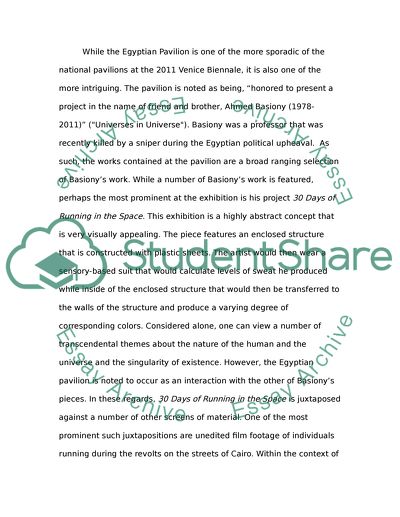Cite this document
(“Venice Biennale 2011 Giardini Review Essay Example | Topics and Well Written Essays - 2000 words”, n.d.)
Retrieved from https://studentshare.org/visual-arts-film-studies/1430628-2011-venice-biennale-giardini-only-review
Retrieved from https://studentshare.org/visual-arts-film-studies/1430628-2011-venice-biennale-giardini-only-review
(Venice Biennale 2011 Giardini Review Essay Example | Topics and Well Written Essays - 2000 Words)
https://studentshare.org/visual-arts-film-studies/1430628-2011-venice-biennale-giardini-only-review.
https://studentshare.org/visual-arts-film-studies/1430628-2011-venice-biennale-giardini-only-review.
“Venice Biennale 2011 Giardini Review Essay Example | Topics and Well Written Essays - 2000 Words”, n.d. https://studentshare.org/visual-arts-film-studies/1430628-2011-venice-biennale-giardini-only-review.


